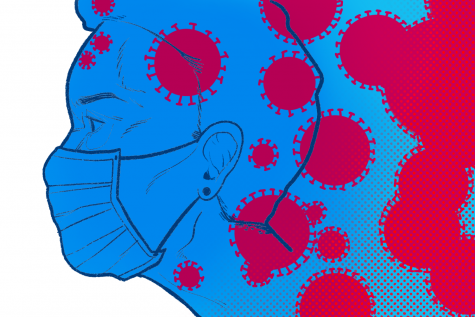Researchers map COVID-19’s effects on BIPOC neighborhoods in Chicago
May 14, 2021

Whether it is measuring the rate of COVID-19 or disinvestment, Black and Latinx communities are disproportionately impacted. When mapped out and color-coded, the inequities are stark.
An April 22 webinar hosted by the National Association of Black Journalists showcased the Mapping COVID-19 Recovery project. In 2020, 25 Chicago-based philanthropic and civic organizations came together to map the history of redlining in Chicago and how COVID-19 has worsened pre-existing symptoms of inequity. Redlining is refusing to loan to or insure someone because they live in an area viewed as a financial risk.
The purpose of the project was to identify solutions to rebuild underserved BIPOC Chicago neighborhoods on the South and West sides post-COVID-19 by identifying the policies that exacerbated inequities concerning health outcomes during the pandemic.
Latinx and Black community members have a higher death rate from COVID-19 than other groups in Chicago.
Maudlyne Ihejirika, the outgoing president of the NABJ’s Chicago chapter, hosted the event via Zoom. The panel featured Dan Cooper, director of research at the Metropolitan Planning Council; Maria S. Pesqueira, president of Healthy Communities Foundation; and Angelique Power, president of the Field Foundation of Illinois.
Ihejirika said addressing the city’s history is the most proactive method to prevent high mortality rates in BIPOC communities.
“While the vaccine will help contain the virus, collective and rapid action will be required to rectify history because history is not pretty,” Ihejirika said. “We want to rectify rather than repeat it. That is where the Mapping COVID[-19] Recovery project comes in.”
Ihejirika led a moment of silence for George Floyd, Adam Toledo and othervictims of police violence. She said police violence is a contributing factor to the mortality rate of BIPOC people.
Power conceived the idea of mapping geographic disinvestment by using heat maps to collect data, Ihejirika said.
Power said the goal of her research was to shift funds to underserved communities. She said equipping community organizers trying to create social change was one of the purposes of the maps.
Another reason for the maps, Power said, is to inform philanthropists and private investors on how to most effectively apply funds.
One map of Cook County’s redlining shows 80% of the predominantly BIPOC-populated study area is affected by redlining with 25% of that population living below the poverty line.
Similarly, health issues such as obesity and diabetes are caused by a lack of access to fresh food, a disinvestment in community health centers and a difficulty obtaining health care, Power said.
Power said all of these factors made BIPOC neighborhoods more vulnerable to COVID-19.
Black and Latinx neighborhoods are tinderboxes—areas prone to crises with high percentages of people with diabetes, high blood pressure and disabilities, she said.
Cooper of the Metropolitan Planning Council said quarantining and working from home is a luxury many BIPOC Chicagoans don’t have.
“Essential workers were disproportionately Black and Latinx,” Cooper said. “They didn’t have the luxury of quarantining at home. These are our health care workers, businesses and CTA workers.”
Another luxury he said should not be taken for granted is housing with enough space to social distance while quarantining.
Power said owning a home is key to generational wealth and health. Unfair loan terms—also known as predatory lending conditions along with housing covenants and other discriminatory tactics make home ownership difficult for Black and Latinx Chicagoans.
But Cooper said the purpose of the project goes far beyond maps and charts.
“The point is to center the policies, the structures, the systems that got us here and to center the idea that we have a choice,” Cooper said. “This isn’t just behaviors. This isn’t just random. We have a choice to deal with structural inequities.”







